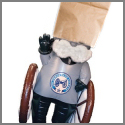|
Nostalgia4Infinity posted:Does its oxygen system kill pilots as well? The whole point of using a 757 is so you know it doesn't There's five times as many 757s as F-22s, and most of them have more operational hours than any F-22 will ever have.
|
|
|
|

|
| # ? May 21, 2024 20:00 |
|
GramCracker posted:So yea, I found out that I can pay to do a "flight training" in a P-51C best part of doing all of your PPL training in a P-51? You'll also walk away with High performance, Complex and taildragger endorsements. Worst part? you just spent $128k on flight training. EDIT: Still worth it.
|
|
|
|
Nostalgia4Infinity posted:Does its oxygen system kill pilots as well? They test everything Kilonum posted:best part of doing all of your PPL training in a P-51? You'll also walk away with High performance, Complex and taildragger endorsements. Compared to spending that on some liberal arts degree at some ritzy private school, worth it.
|
|
|
|
Nostalgia4Infinity posted:Does its oxygen system kill pilots as well? Don't be silly. When a civil aircraft kills pilots, the manufacturer actually has to deal with the consequences.
|
|
|
|
Space Gopher posted:Don't be silly. When a civil aircraft kills pilots, the manufacturer actually has to deal with the consequences.
|
|
|
|
Here's a video of a 747 in the boneyard poppin' wheelies during high winds; https://www.youtube.com/watch?v=cHhZwvdRR5c
|
|
|
|
He just wants to fly again 
|
|
|
|
Airplanes just want to fly fake e: I'm actually nerdy enough that "Starships just want to fly" annoys me, because if it's in space, it's obviously not flying.
|
|
|
|
Nebakenezzer posted:Airplanes just want to fly  . .
|
|
|
|
Nebakenezzer posted:Airplanes just want to fly They are falling, with style.
|
|
|
|
TA-152H from the Smithsonian currently undergoing restoration. (click for bigger) Pretty amazing bird when you read it's stats. If these were as numerous at P-51's or P-47's are, you'd probably see them cleaning up in Reno. I think WWII pretty much took the prop-driven plane as far as it would go performance wise. (excluding insane things like the Thunderscreetch) Also there is enough space between the cockpit and the end of the nose to land a Fieseler Storch on. Max Speed - 472 mph @ 41,000ft Max Altitude - 48,550 ft Rate of Climb - 3,445 ft/min More Pics Here
|
|
|
|
Blistex posted:I think WWII pretty much took the prop-driven plane as far as it would go performance wise. (excluding insane things like the Thunderscreetch) Performance-wise, sure, but that's because turbojet (and from that, turbofan and turboprop) engines became practical during WWII, and turbofans work better at high altitudes and speeds. I'd also much rather ride in a modern turboprop aircraft than a WWII-era radial, for the safety and reliability improvements alone.
|
|
|
|
Remember, some of the largest and most complex piston aircraft engines EVER were spawned just before or during WWII. (also notice only two of those I linked actually made it into large-scale production) Also, I love how Continental and Lycoming still use the designation system the military used for piston engines for their civilian products to this day (albeit with a couple of modifications).
|
|
|
|
Blistex posted:I think WWII pretty much took the prop-driven plane as far as it would go performance wise. (excluding insane things like the Thunderscreetch) Also there is enough space between the cockpit and the end of the nose to land a Fieseler Storch on. I'd say before the Schneider cup drove most of the innovation for aircraft. You had supermarine breaking 400mph in a freaking seaplane in 1931 The Macchi Castoldi MC-72 was an amazingly complex aircraft flying in 1930-31 and in 1933 flying at 424mph and still holds the record of a fastest seaplane at 440mph. Wrote to Fiat a few years ago about the A.S.6 engine and got a few drawing/pictures back from their archives   Enjoy the hugeness
|
|
|
|
Here were my aeronautical insane things this week. jetage by RReiheld, on Flickr and something new at the junkyard. This is in addition to the two F-105s, the S-2, the Dog Sabre, the T-33, and all the vietnam and korea era helicopters. Took me a minute to figure out what it was, not the usual angle you see such things.  newjunk by RReiheld, on Flickr
|
|
|
|
Boomerjinks posted:Who was at Wings Over the Rockies? Did you see the other helicopter flying around it filming? Mah camera. (I wasn't there) 
|
|
|
|
Blistex posted:TA-152H from the Smithsonian currently undergoing restoration. (click for bigger)
|
|
|
|
Pics of AC001 that shat a turbine section shortly after takeoff.           
|
|
|
|
Slo-Tek posted:Took me a minute to figure out what it was, not the usual angle you see such things. Is it a B-52? Assuming the openings on the top are the ejection doors/escape hatches.
|
|
|
|
Holy christ JTD-8s are loud.
|
|
|
|
Terrible Robot posted:He just wants to fly again I was almost in tears, poor -200 yearns to fly, but never will. (I love the classic 747s, the -400 and on are just too... modern)
|
|
|
|
BonzoESC posted:The whole point of using a 757 is so you know it doesn't Also worth mentioning that when you use an airliner you can have test engineers on board along with a shitload of data collecting/analysis equipment, instead of being restricted to what you can send via telemetry and/or what you can download from the jet after it lands. Northrop Grumman has a couple of BAC-111s they use for the same purpose:  Slo-Tek posted:and something new at the junkyard. This is in addition to the two F-105s, the S-2, the Dog Sabre, the T-33, and all the vietnam and korea era helicopters. That's an unusual paint scheme...any idea where it came from?
|
|
|
|
smooth jazz posted:Pics of AC001 that shat a turbine section shortly after takeoff.  Wow, that is absolute carnage. It's going to be interesting to see what the investigation says about this; a failure such as this is extremely rare, especially in a state-of-the-art engine like the GE90.
|
|
|
|
iyaayas01 posted:That's an unusual paint scheme...any idea where it came from? Couldn't find any searchable numbers on it from over the fence. One of these days I'll stop by during business hours and ask what they are up to. They aren't scrapping them, but it's been 2 years and I've not seen any progress toward restoration either. I googled a bunch of numbers off the S-2, and it was in the boneyard 3-4 years ago, so I'm guessing the rest of the stuff was bought out of arizona over the years as well.
|
|
|
|
Terrifying Effigies posted:Is it a B-52? Assuming the openings on the top are the ejection doors/escape hatches. The nose looks like a C-130 to me. I have no idea what the hatches are.
|
|
|
|
Ola posted:The nose looks like a C-130 to me. I have no idea what the hatches are. Nah, it's definitely a BUFF. A Herc's fuselage is wider than that.
|
|
|
|
Ola posted:The nose looks like a C-130 to me. I have no idea what the hatches are. Here are some internal views of another buff. You can see the rails the seats launch from. The lower deck ejects down.  
grover fucked around with this message at 20:23 on Jun 2, 2012 |
|
|
|
Yeah, you guys are right.
|
|
|
|
Terrifying Effigies posted:Is it a B-52? Assuming the openings on the top are the ejection doors/escape hatches. It's a B-52. No doubt. I worked B-52G & B-52Hs for 9 years. In the photo below you can see the four upward ejection seat hatches, the refuel doors, the antenna aft of the rear hatches, and the hump on the radome.  Edit: Here's a "G" model in the old brown/green camo paint. 
LOO fucked around with this message at 03:13 on Jun 3, 2012 |
|
|
|
Got to see Fifi fly today, along with a bunch of other stuff. I'll have some photos up in a bit, but for now I just want to say that there's nothing to make you realize what an amazing machine the P51 is like watching one take off immediately following a B-29. It's like some sort of car chase between an F1 car and a garbage truck.
|
|
|
|
Phanatic posted:Got to see Fifi fly today, along with a bunch of other stuff. I'll have some photos up in a bit, but for now I just want to say that there's nothing to make you realize what an amazing machine the P51 is like watching one take off immediately following a B-29. It's like some sort of car chase between an F1 car and a garbage truck. Likely my favorite airshow story of all time was from Thunder Over Michigan about 8 years back. They had 14 B-17's there, and as we were watching them take off for the big formation flight, this old geezer standing next to me wasn't looking at the airplanes, he was looking at his watch. He said "Let me know when each aircraft makes it's takeoff roll, ok?" So I said "now......and now." he says "22 seconds" "and now" "25 seconds, jesus" "and now" "18 seconds" and so on for all dozen aircraft. Then he says to me, "when I was flying out of Duxford, we had 5 second intervals between takeoff rolls, anything more than that and you got your rear end chewed...when we were putting together 100 ship formations to have the lead aircraft burning gas for 20-30 minutes waiting for the stragglers to get airborn could have cost lives!" Learned a thing that day.  b18thunder by RReiheld, on Flickr Slo-Tek fucked around with this message at 06:01 on Jun 3, 2012 |
|
|
|
Slo-Tek posted:
What's that, right about 50% of all airworthy B-17s?
|
|
|
|
iyaayas01 posted:What's that, right about 50% of all airworthy B-17s? They said it was the most B-17's in the air at the same place and time since 1945. They also had both B-24's (one is an LB-30) still flying, and a decent number of P-47's. Though the show has gone steadily downhill from there, price goes up, they sit you further back, and they havn't put together anything as impressive for a lineup. Still pretty good, just not best-ever.
|
|
|
|
Slo-Tek posted:Likely my favorite airshow story of all time was from Thunder Over Michigan about 8 years back. They had 14 B-17's there, and as we were watching them take off for the big formation flight, this old geezer standing next to me wasn't looking at the airplanes, he was looking at his watch. He said "Let me know when each aircraft makes it's takeoff roll, ok?" Also, Duxford is still there, and is the site of the Imperial War Museum's aviation stock and the American Air Museum. They've got a Concorde. And a TSR-2. And the only SR-71 outside the US.
|
|
|
|
Heinkel He-115 recovered in Norway. Never know with liveleak, but the date on it was yesterday so I'm not sure how recent it was. http://www.liveleak.com/view?i=ace_1338726717
|
|
|
|
Cool! Norway is a good place for rare Nazi birds; the only Fw 200 Condor in existence was taken from a Norwegian mountainside. Don't know if it's being restored as a warplane or an airliner, as Lufthansa is apparently doing the work.
|
|
|
|
Happened today! Here's a news article which you can google translate. http://www.aftenposten.no/nyheter/iriks/Her-ser-et-tysk-bombefly-dagens-lys-6842504.html
|
|
|
|
So here's a few:       Bonus Guarnere:  Had him autograph my grandfather's Luger holster. When I took it out of the bag he threw his hands up and said "Holy geeze, where'd you get that?" Also, turns out he was signing autographs all day with a broken collarbone.
|
|
|
|
(Imgur is acting up. I have some images for this, but I guess I'll have to add them later.) ACHTUNG ZEPPELIN VI: Leidenschaft Brennt die Luftschiff-Flotte The Story of German Airships in the First World War History rarely has do-overs, but in the summer of 1916 the men of the German Naval Airship division got exactly that. The Battle of Jutland was a landmark naval battle, one which Zeppelins had been a part of, though they were more witnesses than participants, thanks mostly to terrible weather. The do-over came a few months later, in something called the Sunderland Operation. Adm. Scheer wanted to try his defeat-in-detail plan again that lead to the Battle of Jutland, only this time he was willing to wait for good weather for his Zeppelin squadron. If nothing else, it demonstrated the pivotal role Count Zeppelin's sky cruisers had come to play in the Imperial Navy. In this operation, Adm. Scheer would once again would position his U-boats in the North Sea, and attempt to lure out elements of the Royal Navy, this time by bombarding the town of Sunderland. Zeppelins were to form a patrol line across the North Sea from Peterhead to Norway. At the same time, other airships would form an early warning circle around the High Seas Fleet, ensuring the British would not turn the tables. All this came to pass, and it was the highlight of the war for Zeppelins being used as strategic scouts. The rest of the operation didn't go as well; as a matter of fact airships saved the High Seas Fleet from a battle that might have very well destroyed Germany's entire armada. This sounds enormously impressive...until you hear the full story. Post Hot Steamships and the Edwardianest Dreadnoughts U Got  L 31 and a German Dreadnought The main problem with Adm. Scheer's Sunderland plan, in retrospect, is that he made a few assumptions that were faulty, and as those assumptions unwound, so did any chance of the Sunderland operation succeeding. Scheer's first faulty assumption was that he would have the element of surprise. In the time between the battle of Jutland at the start of June, and the Sunderland operation in Mid-August, Scheer had taken pains to beef up his operational security. He believed a spy had betrayed his first plan to the British, and was determined to plug whatever leaks the spy had exploited. The Naval code-book was changed, and in the airship squadron, only Commanders of ships and above knew anything of the plan in the works. The airship squadron had also been reinforced with the new R-class Zeppelins; as compensation for the loss of scouting cruisers at Jutland, the Navy had been granted all of the new airship class, save one. The British, unfortunately, while they could no longer decode messages, could still listen to the volume of wireless messages the German Fleet sent out, and when these messages spiked in frequency, they assumed the High Seas Fleet was about to sail. Thus, as Scheer weighed anchor, all three British fleets departed port as well. Scheer's second bad assumption was that once his airship picket was established, it would be impossible for the British to sail without his knowing. As it happened, even as the Zeppelins assumed their patrol areas in the early AM of the 19th of August, the British 'Grand Fleet' ľ its fleet of battleships ľ had already sailed past that line. Also slipping by unseen was the battlecrusier fleet, which joined up with the battleships, forming an armada capable of crushing the German Navy. This fleet started a search pattern, and worked its way south. Harwitch force, a fleet of Cruisers and Destroyers had deployed far to the south, was working its way north.  The Royal Navy's Grand Fleet Because ôgood weatherö in the North Sea is highly relative, low lying cloud was already forming as the morning dawned. L 13, one of the early warning ships, was making her way through these clouds when she suddenly came upon Harwitch force. Escaping into the clouds to get away from the sudden anti-aircraft fire, L 13 reported two destroyer flotillas and a cruiser squadron on a south-west course. Scheer dismissed these ships as heading for the English channel. L 13 then managed to sight Harwitch Force again, this time on a south-east tack. Scheer dismissed them as scouts for the Dutch coast. Not so far to the north of Scheer, U-52 torpedoed the light cruiser Nottingham in the battlecrusier screen. Adm. Jellcoe, fearing more submarines lurking, temporary turned back to the north. U-52 saw the Battlecrusers turning, and reported to Scheer several capital ships along with Cruisers and Destroyers heading north. Scheer ordered L 31, returning from the picket, to check it out. Capt. Mathy, at the helm of L 31, found cloud as low as 650 ft, and curtains of rain that sometimes reduced visibility to a mile. He was forced to dip beneath these clouds, hoping he was not descending right next to a Royal Navy ship. At 10 AM, L 31 several times bobbed beneath the clouds, spotted several RN ships moving north, and then ascended again to dodge the furious AA fire. His reports confirmed U-52's, including the northerly course, having seen the cruiser screen rather than the battlecrusiers. Scheer, fooled yet again by a temporary heading, wrote off these sightings as well. L 31 tried to stay in contact with these ships: as visibility improved, Mathy descended again an hour later, only to discover he had been shadowing fishing boats, the British fleet having turned south again almost immediately after being seen by L 31.1 The British, for their part, were becoming very uneasy, as captains had been reporting sinister German airships shadowing them. Despite all these reports of activity, Scheer stayed on course for Sunderland. Had Adm. Jellicoe kept his original heading, the Grand Fleet and the High Seas fleet would have joined battle shortly after 1 PM. As it was, his temporary about-face had given the Germans an extra hour. At 12:30 PM, L 13 found Harwitch Force again, and reported many enemy warships moving north. Here, in addition to the low cloud, a thunderstorm had to be avoided, but at one PM, L 13 followed this up with a description of the warships in this force, incorrectly reporting battlecrusiers and at least one battleship. At the report of capital ships, Scheer eagerly sent his surface scouts south, ignorant of the British Grand Fleet, now scarcely over the northern horizon. He also sent several messages to L 13 to confirm the ships in this squadron, only now L 13 had lost contact with the flotilla, several inconvenient thunderstorms having demanded immediate attention. Scheer then sent the entire fleet south to find this flotilla, only to give it up as a bad job at 3:30 PM. Too late to bombard Sunderland, Scheer steered for home. So at the critical moment, a report in error drew the German fleet away from the very dangerous Royal Navy battleship fleet. While Harwitch force would have been no match for the German Dreadnoughts, the much faster Harwitch force could disengage the wallowing dreadnoughts at will, and thus Scheer had no chance to actually bring them to action. The genuine successes of the day belonged to the German submarines, who torpedoed two British light cruisers, who were the only units to actually see action. It was the last major combined arms fleet operation attempted by the German Navy. While catastrophe had been avoided, it was because of a fortunate mistake. As was often the case, n the early days of aviation too much was expected of new technology. Even with 13 airships in the air, the North Sea was still a very big place. Hope and Airships float So autumn had come again, the harvest gathered, and the Germans were not saved. The battle of Verdun had started back in February of 1916 was still going on. While exhausted German troops had captured much of the French fort system, the French were launching a counter-attack that would drive them back to their February starting positions by the end of the year. The Austro-Hungarian Empire had been dealt a stinging defeat by the Russians, a defeat that was the start of the end of the Empire. Despite the best efforts by the Imperial fleet, it was clear now that they were unable to break the Royal Navy blockade. Adm. Scheer renewed his political efforts to blockade Britain via U-Boat. This also meant airships were free to raid the UK, and Strasser in these darkening times clung ever more tightly to the belief that Zeppelin bombing would break Britainĺs will to fight. How deeply he believed this was on exhibit in a letter he sent to Scheer. Arguing that expanding the airship squadron from 18 to twenty-two airships was necessary, Strasser wrote: ôI am well aware of the generally prevailing personnel problems, but I believe that the personnel must be made available, if necessary through reductions in other areas, since the airships offer a certain means of victoriously ending the war.ö (Emphasis mine.) If previously intense raiding activity was done with the spirit of striking the knockout blow, now the fall raiding had grown a bit desperate in its attempt to secure real victory. The raiding had restarted in the new moon period in early august, and the first three attempts were all marked with such confused navigation that all bombs dropped in open country. In a fact difficult to make up, British authorities started to believe the raids were a deliberate attempt to light growing crops on fire using incinerator bombs. The next new moon was between August 20th and September 6th, and Strasser transferred Zeppelins from the Baltic to increase his forces. The opposing forces showed off yet another new tactic: Zeppelins were now being fired upon while still at sea. Destroyers and armed trawlers were on the lookout for Zeppelins hovering offshore, waiting for it to grow dark. August 24th saw 13 Zeppelins take off to attack Britain. L 13 on her way in took a hit from the cruiser Conquest: an AA shell went clean through a cell amidships and exploded over the airship's back. With one cell pierced and another shot with shrapnel, L 13 turned immediately for Belgium, and with a helpful tail wind, L 13 made it to the Hague with the pierced cell still half full. Diving quickly from 8000 ft, adiabatic heating warmed the lifting gas, generating extra lift, allowing L 13 to make a perfect landing. The other ships had difficulty with weather and didn't accomplish much, save L 31 under Mathy and L 32 under Peterson. Shrewdly, they both chose to fly overland to Aachen before turning towards Britain, and avoided the new Navy attackers. Peterson had to deal with a headwind, and made it as far as Dover before deciding it was too late to raid London. He dropped his bombs on ôships at anchorö in Dover, mainly making an awesome sight for observers who got to see the harmless but spectacular explosions just outside the port. Mathy followed the Thames straight to London, and for once, the bad weather worked to an airship's benefit. Using the clouds and mist as cover, Mathy managed to catch London defenses napping. The spotlights were flummoxed by fog, and the AA guns only started to fire as Mathy was retreating. Even the patrol aircraft were ineffective, only catching a glimpse of L 31 as she retreated heavenward. Bombs fell on eastern London, starting at the Thames and then heading south and east into the suburbs, and in monetary terms this attack was second only to Mathy setting the soft goods quarter alight. In his ten minutes over the capital, Mathy managed to do some $130,000 worth of damage, all but wrecking the London Electric Supply Company and the Deptford Dry Dock. On L 31's return, she landed heavy, having used up all her ballast in flight and having absorbed quite a bit of rain. Workers from the Zeppelin factory had to be brought in to make repairs. I mention this as L 31 and SL 9 ľ a Schutte-Lanz wooden frame ship also damaged in the same raid ľ were the only two ships that missed out on the raid on September second, the single largest airship raid of the war. Strasser dispatched all Naval Zeppelins in the North Sea area ľ twelve ľ and for once managed to successfully coordinate with the Army airship division. The Army also sent everything they had: LZ 90, LZ 97, LZ 98, and SL 11, the latest ship from the Schutte-Lanz works. They even managed to attack the designated target, London, simultaneously. Sixteen airships all, with 32 tons of bombs to drop, the raid would mark the turning point in the history of the Zeppelin as a combat weapon. Peak Airship The weather on the 2nd wasn't that great in some ways. Airships encountered strong headwinds 'upstairs' flying to Britain, as well as rain that often turned to snow, as well as icing. That said, navigation was not impeded, and several Zeppelins managed to get to London. One Army airship, LZ 97 turned back thanks to the weather, but LZ 98 became the first airship to reach London that night. As LZ 98 crossed the outskirts of the city, she came under heavy fire from AA batteries. LZ 98's captain later reported bombing the London Docks, but in truth he dropped all his bombs on his attackers and then retreated. It's just as well; unknown to LZ 98 was that an RFC plane already stalking her, who was only shaken off after LZ 98 dropped her bombs and climbed rapidly. LZ 90 didn't do much, except accidentally drop the cloud-car that hangs in the Imperial War Museum to this day. Fortunately, no one was in the cloud car when it fell.  SL 11 nearing completion. The 'crow's foot' at the front are landing ropes. SL 11, surprisingly, was the star of the Army airships. An SL (plywood frame) airship, she had the same displacement and most of the capabilities of the Q-class Zeppelins. Newly commissioned SL 11 was captained by the London Born Hptmn. Wilhelm Schramm. SL 11 had circled around the city to approach it from the north. By 1 AM, SL 11 was over the outskirts and began running south, dropping bombs as she flew. Inevitably, the searchlights and guns of North London picked up the airship, but SL 11 flew on, determined to complete her bombing run. Meanwhile, the Navy Zeppelins had started to arrive. In particular, L 16 had crossed the coast at 10:40, and had also aimed to attack London from the north. While attacking a railway station she happened across, the crew of L 16 could make out the searchlights of London engaging LZ 98 some 50 miles away. At 2 AM, L 16 began its London attack bombing what was thought to be the suburbs of London (actually some towns just north of that.) They could make out the SL 11 over London as she turned and headed in L 16's general direction. An RFC BE2, as well, piloted by Lt. Leefe Robinson had spotted SL 11 in a net of spotlights and under heavy fire. She turned away from central London and headed north, and began to climb to escape from the spotlights. As she did this, all the guns in north and central London opened up, and the hammering din of the artillery woke thousands of sleeping Londoners, who then watched the drama in the sky unfold. Lt. Robinson's BE2, a mote of dust flitting though the spotlights, had both an angled machine gun and incendiary bullets. Robinson closed and raked SL 11 with a drum of the new bullets...to no effect at all, aside from alerting the machine gunners to his presence. (Robinson later reported he could make out the flickering red light of their muzzle flashes.) Thus began a wheeling dual, with SL 11's machine gunners trying to plug Robinson before he could bring his angled machine gun to bear. Again Robinson raked SL 11 with bullets, and again there was no effect. As SL 11 passed 11,000 feet, the spotlights began to loose track of her. Loading a third drum, Robinson changed tactics, attacking just one point on SL 11's rear underside. For a moment, nothing happened. Then: ôI had hardly finished the drum before I saw the part fired at glow. In a few seconds the whole rear part was blazing.ö Rolling and diving to avoid the now aflame airship, Robinson became the first pilot to score a kill with the new ammo. Londoners on the ground cheered SL 11's end. L 16 just 2 KM away when SL 11 was shot down in flames: ôDuring bomb dropping a large number of searchlights, more than a dozen, had seized an airship traveling south to north. It had already passed the center of the city when it caught fire at the stern, burned with an enormous flame and fell. The fire lit up bright as day the L 16, which was only 1000 to 2000 meters to the north.ö The planes that had just shot down LZ 11 saw L 16 and turned to pursue; then the light faded, and L 16 wisely got the hell out of there. The SL 11 burned so brightly that she was clearly visible to all the remaining Naval airships. Instantly, all the crews approaching London knew what had happened. In retrospect, being on an hydrogen airship crew meant (among other things) a constant dread of fire. Now, this worst of all fears was coming true. Peterson, in L 32 had been 20 miles south of London, trying to work his way to windward for an attack when SL 11 was shot down. She ô...suddenly burst into flames. The blazing mass radiated a red-yellow light, and illuminated the area over a wide radius and fell slowly. The resulting fire on the ground continued until out of sight...ö Peterson changed his plans after that, and bombed Kensington instead. L 21, some 30 miles from London, not only made out the end of SL 11 but also could make out two aircraft releasing victory flares. At 3:15 AM, L 21's captain thought it too late to raid London, and began looking for the town of Norwich instead. Suddenly under attack from a battery and spotlights, L 21 dropped her remaining bombs. The thing she was bombing was in fact the Royal Palace at Sandringham. No damage was done. In fact, despite the large amount of bombs carried by the attacking airships, damage in total was relatively meager. Only in London and in the midlands where two naval airships attacked was any appreciable damage done. For the British, the end of the SL 11 created jubilation. The next day was a Sunday, and was informally declared ôZepp Dayö. Thousands had cheered SL 11's end, and thousands more made the trek to the beet field just north of London where the charred wreck of SL 11 lay. Her fallen gondolas and engines had gouged craters in the field where she fell, and her ingenious wooden structure was little more than charcoal. The most substantial part of the wreck was miles of steel bracing wire that lay all over the field. Lt. Robinson, meanwhile, was the hero of the hour. Though the British tried to conceal the existence of the new incendiary bullets, the decoration of Lt. Robinson with the Victoria Cross confirmed to everyone that an airplane, and not an artillery shell, had struck the fatal blow.  The steel wire was later bundled and sold at one shilling an inch length, to benefit war wounded. The whole raid was the end of the Army airship squadron, which would be disbanded within the year. Surprisingly, though disheartened by the loss of an airship, the Naval Airship division wrote the whole thing off as an anomaly. Thinking wishfully that the fatal fire had been aided by SL 11's wooden structure, there was also the (frankly well founded) view that the Army was less competent with airships. While I'm sure morale among the crews took a hit, it would take more casualties to change the thinking of the Airship division's commanders. The very next raid on September 23rd would provide these casualties.   Bonus: the Cloud Car  We've talked about all sorts of crazy things in this thread, like men in squirrel suits jumping off of cliffs, and men being rescued in midair via a C-130. With those things in mind, I'd like to introduce you to the one crazy thing along these lines I'd actually try is the sub-cloud car that the Germans occasionally mounted to their airships. Picture it: You are in a pod, like a drop fuel tank. This pod is suspended by a half-mile long steel cable connected to an airship far above in a cloud bank, so the cable actually vanishes into the cloud. You are two thousand feet up, suspended by this single wire, observing the activity below you and reporting it to the airship via telephone. There is also a hole in the floor of your little pod, along with a small mattress so you can actually lie down and observe the things directly below you. It was a popular job on airships, apparently because it was the only place on board a crewman could smoke. An invention of the Army Airship corps, the cloud car was used for observation, allowing the big airship to hide in the clouds above. Introduced early on in the war, it remained in use with army airships only. Strasser had made tests with a cloud car in November 1915, and had decided that the conditions that solid cloud layers that made the cloud car handy rarely obtained over the North Sea. And when not deployed, the car, the cable, and the winch weighed half a ton, useless weight. There is a story that Strasser was nearly killed in his cloud car ride when the cable became tangled in the radio antenna...is not found in official sources. Nebakenezzer fucked around with this message at 19:02 on Jun 23, 2012 |
|
|
|

|
| # ? May 21, 2024 20:00 |
|
Its been said before, you seriously need to write a book. At the very least please make a thread (or blog if you must) where there is a collective of all your previous work. I always want to reference your past entries.
|
|
|








































